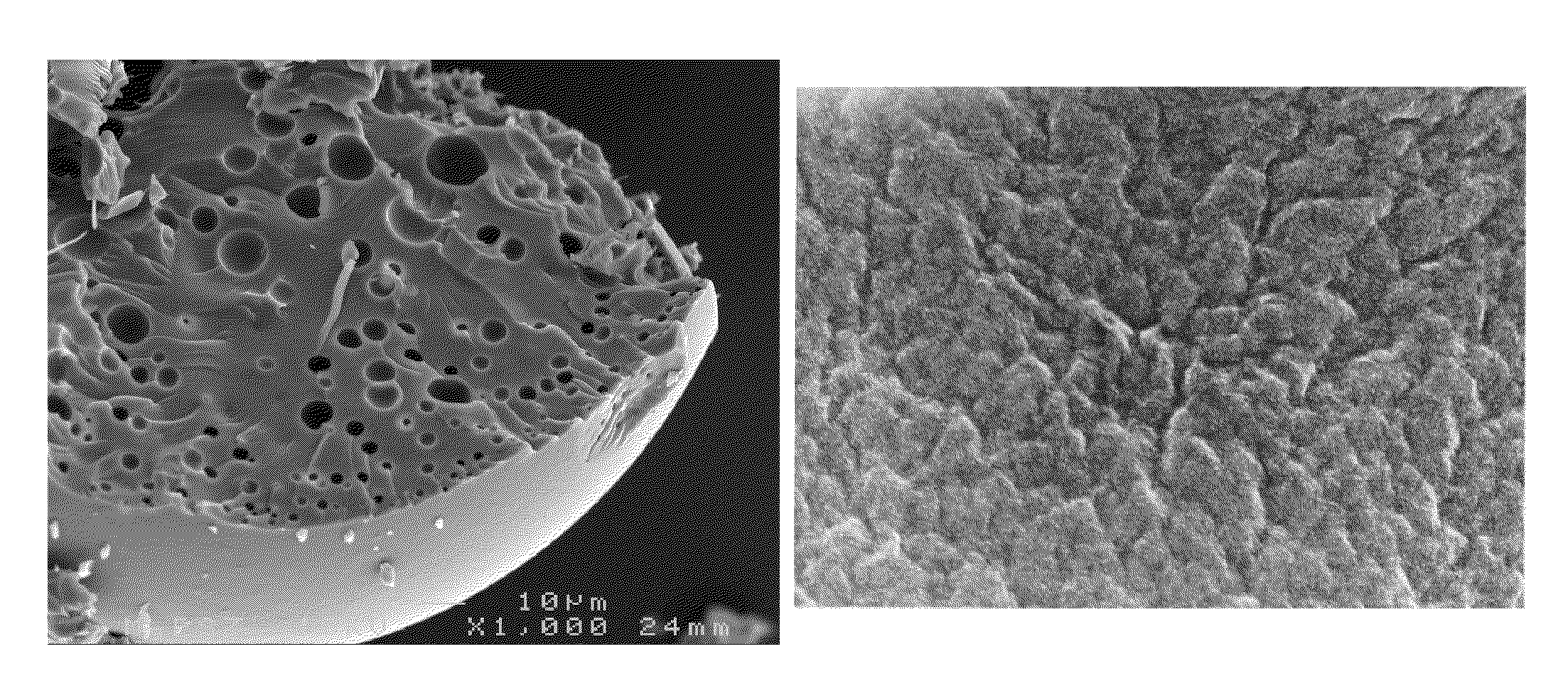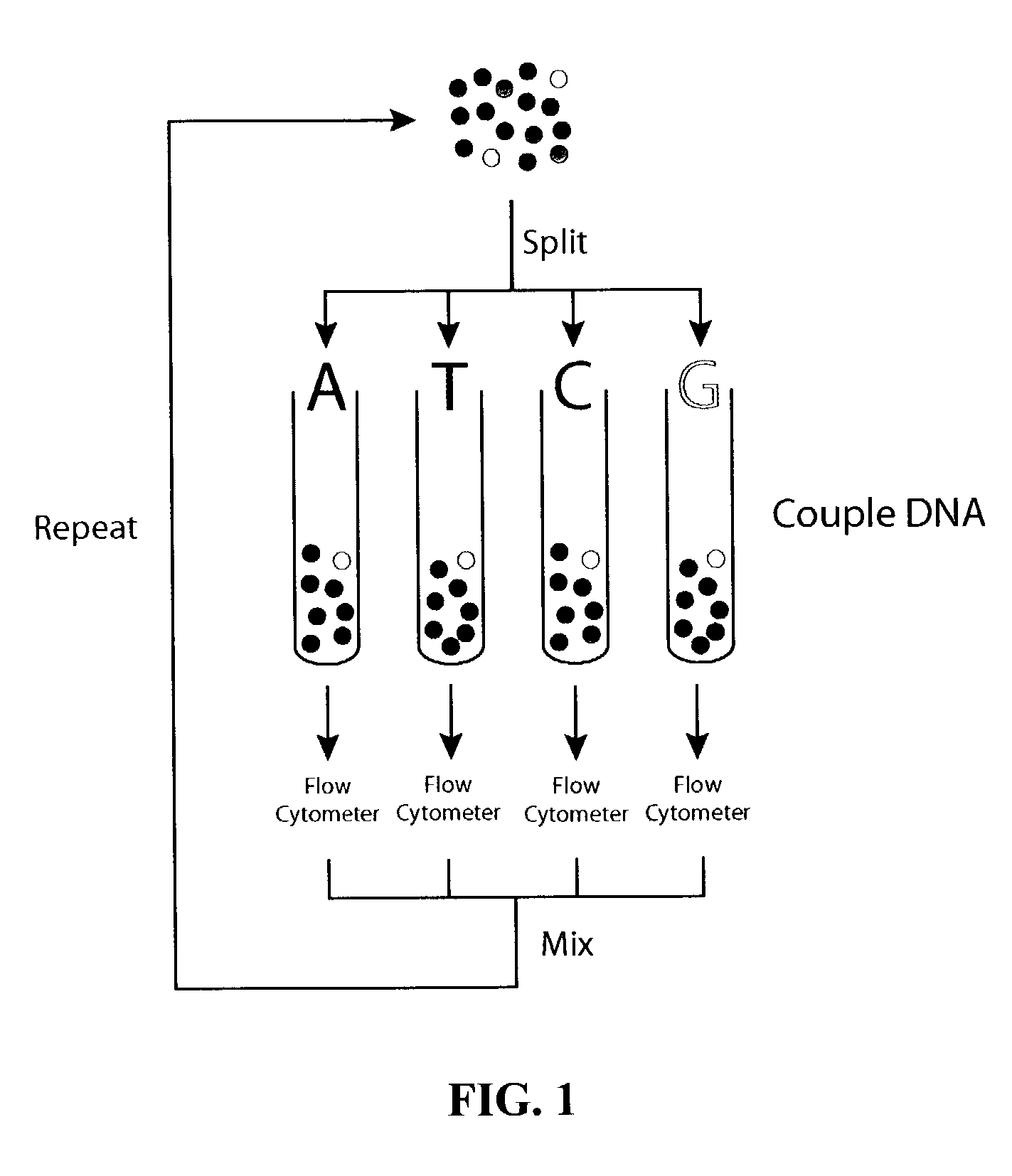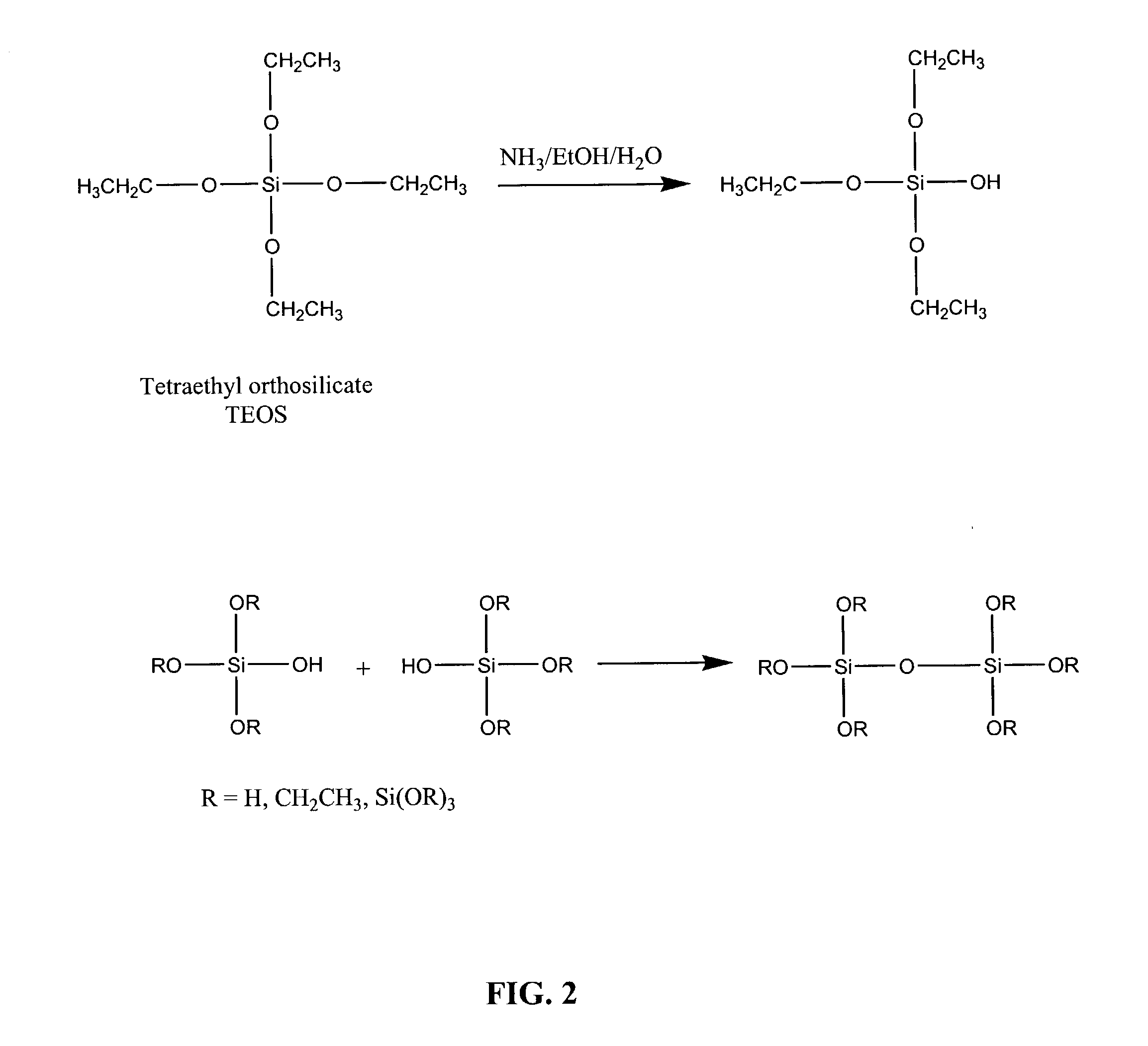Synthesis and use of organosilica particles
a technology of organosilica and organosilica, which is applied in the field of synthesis and use of colloidal organosilica particles, can solve the problems of affecting the optical properties of the optical structure, the speed, cost and library size of the existing sequencing technique used for genetic information, and the insufficient gene sequence, etc., to achieve the effect of high level of functionalized groups
- Summary
- Abstract
- Description
- Claims
- Application Information
AI Technical Summary
Benefits of technology
Problems solved by technology
Method used
Image
Examples
example 1
[0110]This example describes surfactant based particle synthesis. One and four-tenths ml of HCl and 5 ml of CTACl were added to 60 ml of water and the solution was stirred well. One ml of silane (TEOS and coupling agent mixture) was added and the solution was allowed to stand for 5 days. A cross-linking catalyst (NaF or NH3) was added to the samples indicated after this period. The particles were then analyzed using transmission microscopy. The results are shown in Table 1.
TABLE 1 Surfactant based particle synthesis
[0111]Use of the thiol based coupling agent MPS in the synthesis of the particles, appeared to have little effect on particle morphology at low coupling agent ratios (MPS:TEOS less than 1:10). However, at higher ratios, the particle size increased to the point where an optimal size and yield was obtained at 100% MPS coupling agent.
[0112]
TABLE 1Surfactant based particle syntheisSampleTEOSCoupling AgentCatalystParticles1 1 ml——~10 μm20.9 mlAPS, 0.1 ml—~30 μm, poor yield30....
example 2
[0113]This example demonstrates another particle synthesis technique. Using various concentrations of MPS, HCl, surfactant, and cross-linking catalyst through a series of experiments, additional methods of particle formation were demonstrated. The total volume of the mixture was kept constant (10 ml), and ammonia (1 M) was added after 4 days. Table 2 shows the results.
[0114]Table 2 shows the importance of adding a cross-linking agent (NH3 in this example) in the second step. When a known TEOS cross-linking catalyst, such as NaF or NH3 was added to the emulsion, the droplets cross-linked to form stable particles. Particles formed from this process are not ideal, because in the process of cross-linking a lot of ‘junk’ silica is formed, which is not easily separated from the desired particles. Additionally, the particles formed in this process have a tendency to be less spherical. It was found that the addition of ethanol to the reaction mixture immediately after the addition of the ca...
example 3
[0116]This example describes a further optimized particle synthesis procedure. A 110 microliter volume of 35% HCl was added to 10 ml of H2O to form a 0.1 M solution. An 800 microliter volume of this solution was added to 80 ml of water and 10 ml of MPS. The solution was stirred at 2000 rpm for 2 days. A 750 microliter volume of 25% NH3 solution was added to 100 ml of H2O, and the MPS solution that had been stirred for two days was added slowly. Immediately, the MPS reaction vessel was rinsed with about 75 ml of ethanol, which was then added to the ammonia-MPS solution. The milky mixture that formed remained unstirred for 5 minutes, allowing the large silica particles to settle. The top 200 ml of solution was removed, and 150 ml of ethanol was added. The solution was allowed to settle again, and the top 100 ml of solution was removed. The mixture was filtered in a buchner funnel under vacuum with Whatman type 13 filter paper. The collected particles were rinsed with ethanol and dried...
PUM
| Property | Measurement | Unit |
|---|---|---|
| Length | aaaaa | aaaaa |
| Length | aaaaa | aaaaa |
| Fraction | aaaaa | aaaaa |
Abstract
Description
Claims
Application Information
 Login to View More
Login to View More - R&D
- Intellectual Property
- Life Sciences
- Materials
- Tech Scout
- Unparalleled Data Quality
- Higher Quality Content
- 60% Fewer Hallucinations
Browse by: Latest US Patents, China's latest patents, Technical Efficacy Thesaurus, Application Domain, Technology Topic, Popular Technical Reports.
© 2025 PatSnap. All rights reserved.Legal|Privacy policy|Modern Slavery Act Transparency Statement|Sitemap|About US| Contact US: help@patsnap.com



